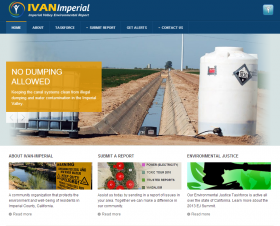This post was written by HEFN Communications Associate Lauren Linville.
There are few words more compelling to me than, “let me tell you a story.” That’s because narratives are simply more interesting ways to convey and consume information. Research has even shown that our brains are hardwired to respond enthusiastically to stories.
HEFN staffers have been considering how storytelling can help our corner of philanthropy. We are especially interested in storytelling for outreach, using a compelling vehicle to share compelling work.
We think stories are a particularly helpful way to talk about grantmaking on environmental health and justice issues. Sometimes realities in this field – and philanthropic responses – don’t fit neatly into a single grantmaking portfolio. A good story about a community challenge and grantmaking response can draw in other funders, without pigeonholing work into just one funding frame.
We also see parallels between the basics of storytelling (characters; setting; plot; conflict; and resolution) and the elements of this work (funders, grantees, sometimes opposition; community conditions and concerns; and innovative grantmaking strategies and action). HEFN’s vantage point gives us an opportunity to see and tell great stories about environmental health and justice philanthropy.
HEFN’s most recent foray into telling grantmaking stories was at a health funders’ workshop in March. We had three HEFN members share a story about how their foundations are addressing health by improving environmental conditions in communities.
Earl Lui of The California Wellness Foundation (TCWF) shared the Foundation’s experience working with a project that successfully tracks and resolves community health hazards in California communities: Environmental Monitoring and Health: A California Wellness Foundation-Funded Model Spreads Across California.
When a grantee wants to replicate another non-profit’s program, it’s a great sign. That was TCWF’s response when one of its grantees mentioned the Imperial Visions Action Network (IVAN). IVAN is an environmental monitoring system that connects community members to solve environmental health and justice problems. As a state-wide funder that prioritizes environmental health, TCWF has worked with IVAN to empower communities to spot hazards and work collaboratively with other stakeholders to address issues. Hear how TCWF has helped improve health across California here.
The Kresge Foundation’s David Fukuzawa related the Foundation’s work at a local and national level to improve children’s health through healthier housing conditions: Improving Health through Housing: The Kresge Foundations Works to Eliminate Dangerous and Unhealthy Housing
This story focuses on the Kresge Foundation’s work to advance health by improving housing conditions, starting in the Foundation’s hometown of Detroit, Michigan. Increased poverty combined with the city’s aging housing stock has resulted in thousands of poorly maintained and unhealthy homes. Such conditions have been linked to health hazards including lead, asthma, and carbon monoxide poisoning. Together with community organizations, Kresge built off of earlier initiatives to improve health in Detroit and scale up their efforts nationally. Read how the Foundation did it here.
And Michele Prichard from the Liberty Hill Foundation talks about how Liberty Hill has employed a multi-phased project to tackle environmental health concerns in six Los Angeles neighborhoods: Revealing and Remediating Hidden Hazards: The Liberty Hill Foundation Funders Clean Up and Green Up Campaign
After years of hearing about cancers, birth defects, lung disease, and other environmentally-linked health problems in poor and minority Los Angeles neighborhoods, the Liberty Hill Foundation took action. In 1996 Liberty Hill helped found the Los Angeles Collaborative for Environmental Health and Justice. In 2008, the Collaborative took its work to a new level with its “Ground Truthing” project to fill in data gaps on air pollution in six Los Angeles neighborhoods. Together, Liberty Hill and the Collaborative have made it easier to explain toxic exposures’ link to health and are leveraging their findings to advocate for policy changes. To read how the Los Angeles-based Liberty Hill Foundation got there, click here.
HEFN plans to make more uses of storytelling to talk with funders about the environmental health and justice field. We could use your feedback! Are you interested in working with us to share your grantmaking stories? Email me at llinville@hefn.org.
These stories have been packaged together with an introductory issue brief, presentation and resource list as a part of a larger toolkit for funders interested in this area of grantmaking. The toolkit is available in beta form here.


